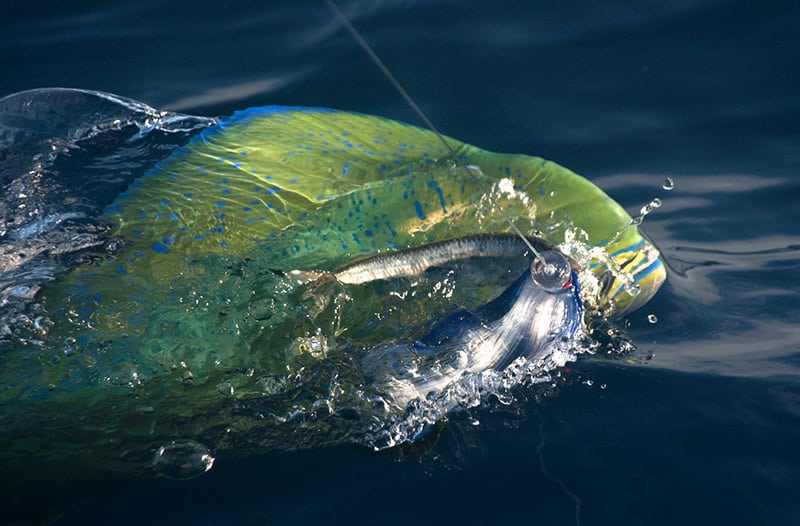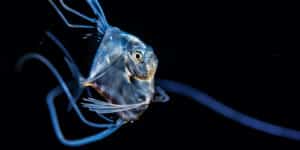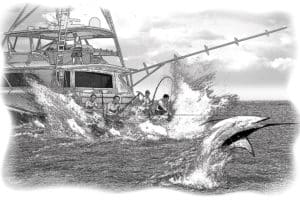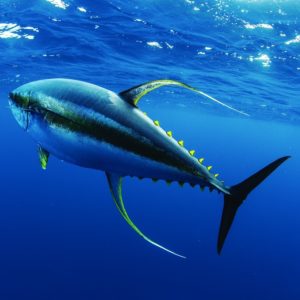
dolphin tagging off Florida
Dolphinfish amass in the waters offshore of Port Canaveral — and much of Florida’s east coast — from late spring through mid-summer, so June is a perfect time to target these fast-growing gamesters for the grill and for research. Two Canaveral anglers I spoke with shared their tips on targeting mahi-mahi and their passion for tag-and-release.
Terry Winn and Ron Sonnemann participate in the Dolphinfish Research Program, launched by researcher Don Hammond in 2006. Winn says he has tagged more than 500 mahi since 2002, when Hammond — formerly with the South Carolina Department of Natural Resources — began his first study.
“While dolphinfish are everybody’s game fish, accessible and enjoyable to catch even on smaller boats, they do not get the attention and research effort that the high-dollar billfish do,” Winn says. “…So, if we don’t help with this effort, what’s going to happen when the managers decide to make changes to the fishery? If we can keep dolphin stocks healthy, we can have an incredible fishery into the future.”
Sonnemann, who has also tagged sailfish and tripletail, says he likes learning about the fish through the tagging efforts, and that the practice brings enjoyment and satisfaction. “Tagging dolphin, to me, is fun, and it’s a good feeling to release the fish with a little bling.”
Both say they usually find dolphin in singles, pairs or small groups of larger fish rather than in the massive schools of small fish often found off the Florida Keys. Bulls as large as 60 pounds have been taken on the troll off Canaveral by these two anglers; fishing begins in depths from about 80 feet out 30 miles or more to the edge of the Gulf Stream. Sonnemann says it’s best to count on a 15- to 20-mile run, so favorable weather conditions become important.
Anglers generally troll with 30- to 50-pound-test tackle and small to medium ballyhoo alone or with lures such as an Ilander Sailure, C&H Lil’ Stubby or Sea Witch. Winn prefers lure colors such as blue/white/silver mylar and bright yellow/green as well as pink. He generally includes one larger natural bait in the spread as well, such as a silver mullet or flying fish.
Winn uses 8 to 15 feet of 60- to 100-pound fluorocarbon leader and a 7/0 or 9/0 hook. Sonnemann runs 80-pound mono pin rigs on the flat lines and 80-pound wire leaders on his downrigger and long lines. Trolling speeds vary from 6 to 9 knots (7 to 10 mph).
They also keep a spinning rod rigged with a jig or a hook for live or chunk bait as they look for weed lines, rips and color or temperature changes. Both also use ROFFS — Roffer’s Ocean Fishing Forecasting Service — to find sea-surface patterns offshore.
If somehow you miss the spring dolphin fishery off Canaveral, don’t worry, the schools come back each fall from late September to mid-November, says Winn, who is a past president of the 200-family member Central Florida Offshore Anglers Club. Winn says the CFOA supports Hammond’s tagging program financially. “Don Hammond is an advocate of the fish, and we trust how he gathers, interprets and utilizes the data,” he says. “… he only receives monetary support from individuals and corporations versus government funding.”
For more information on fishing Florida, go to Visit Florida, and for more information on dolphin-tagging research go to Dolphinfish Research Program.







